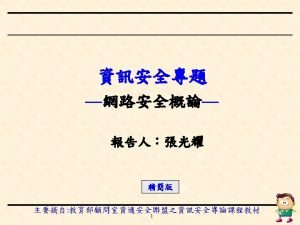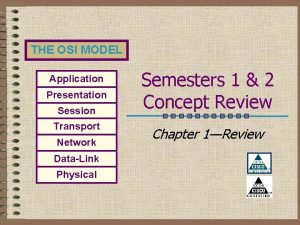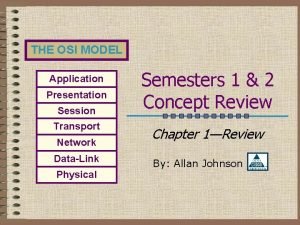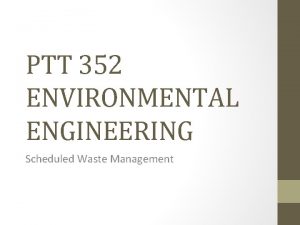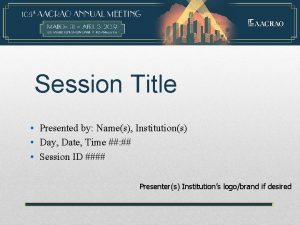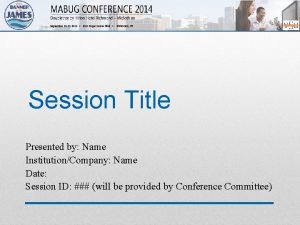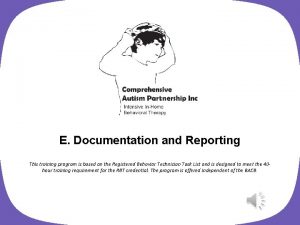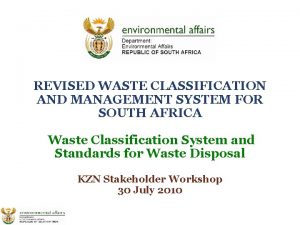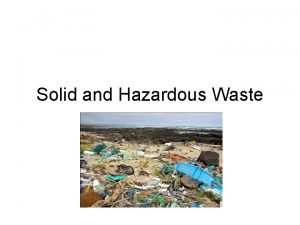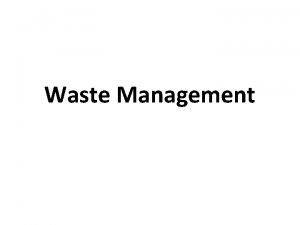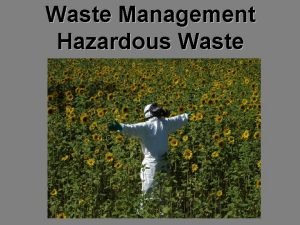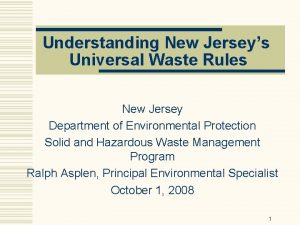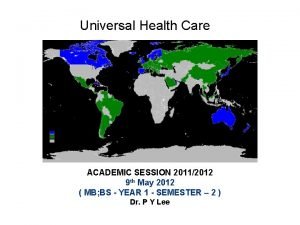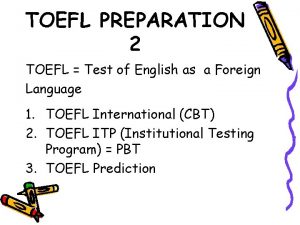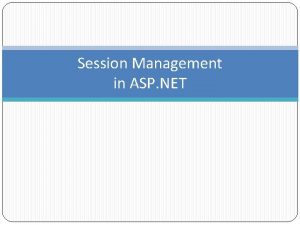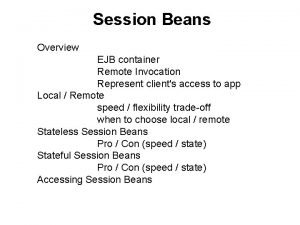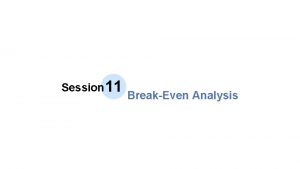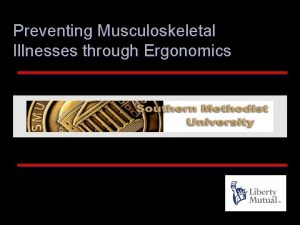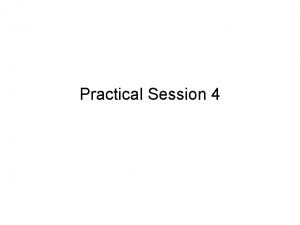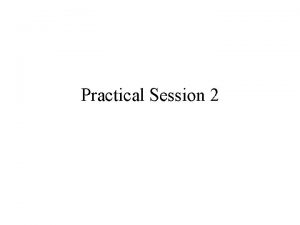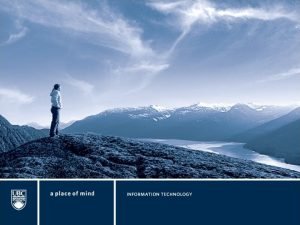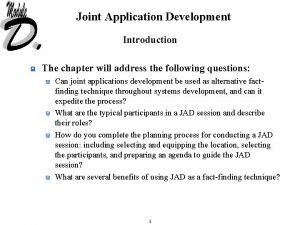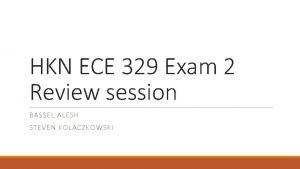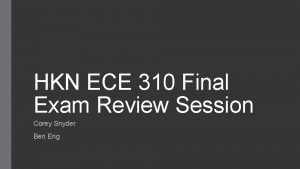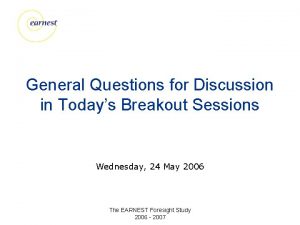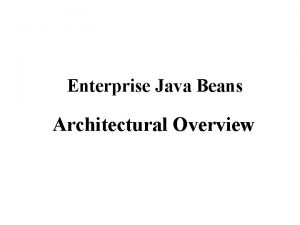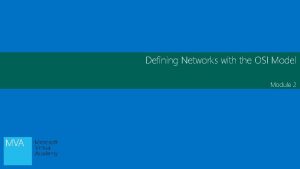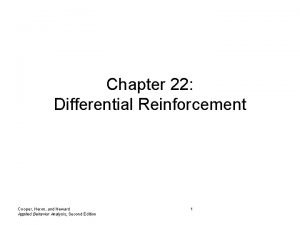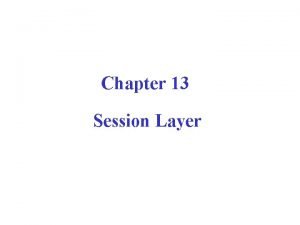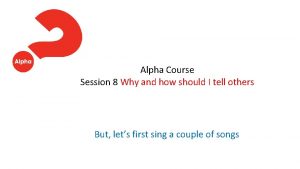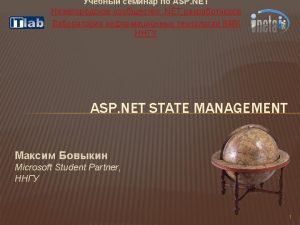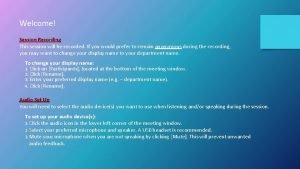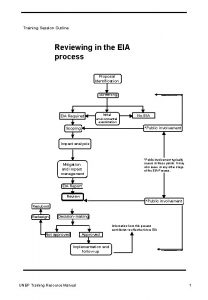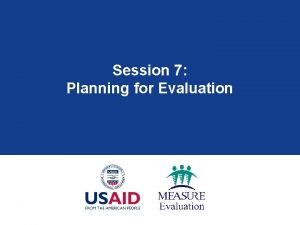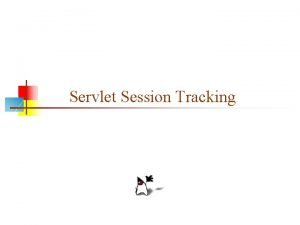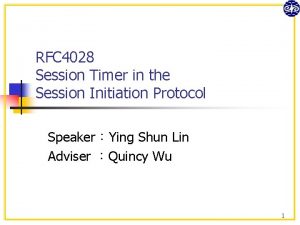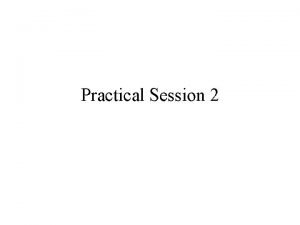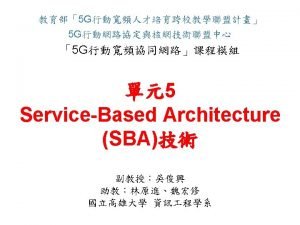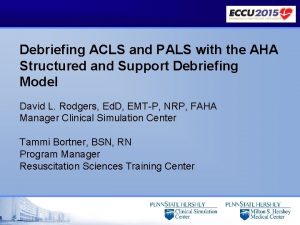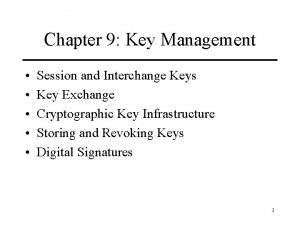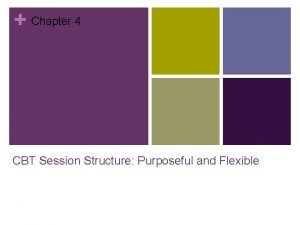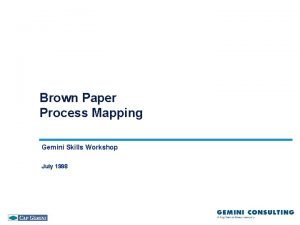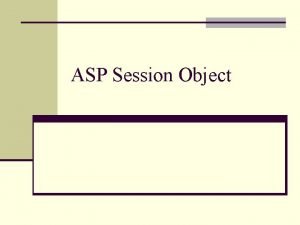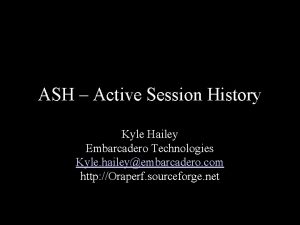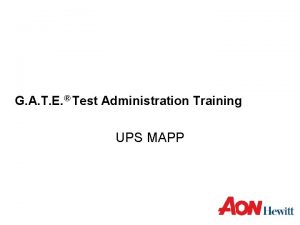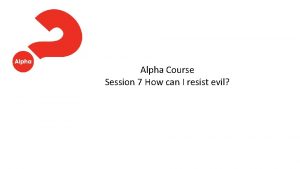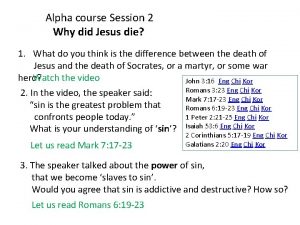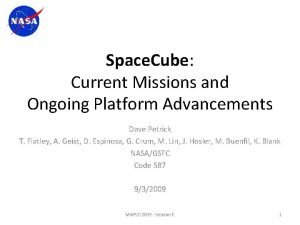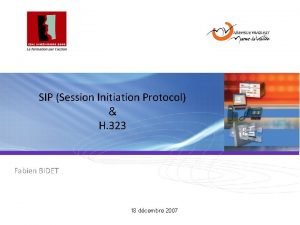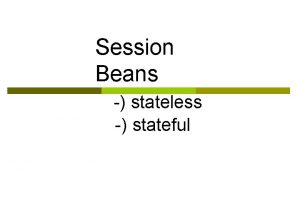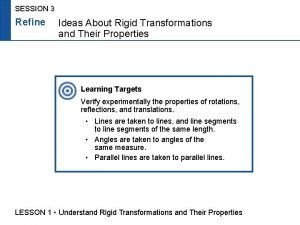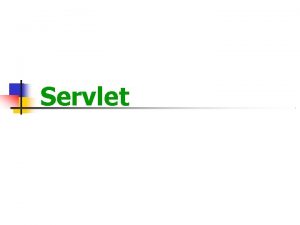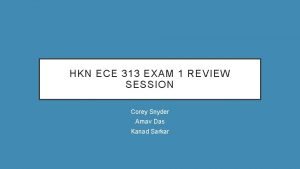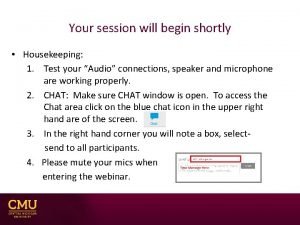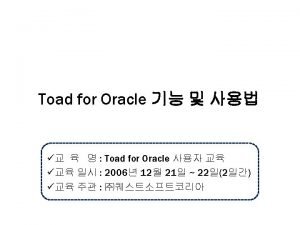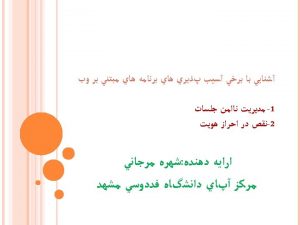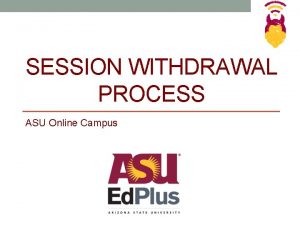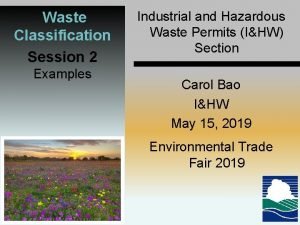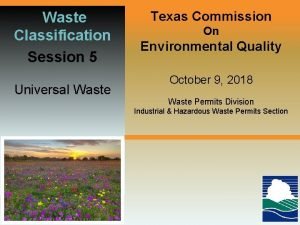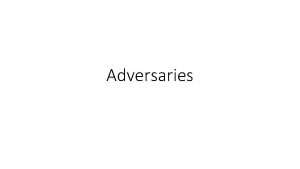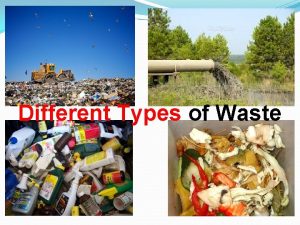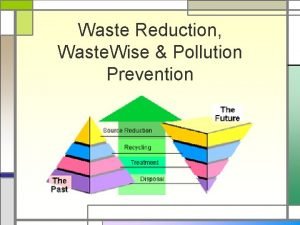Waste Classification Session 2 Waste Classification Presentation Examples
















































































![Topic 4: Table 1 [(40 CFR 261. 2(c)] & Exercises Topic 4: Table 1 [(40 CFR 261. 2(c)] & Exercises](https://slidetodoc.com/presentation_image/28ddc064c8677cff11c3e9fe3c5b3fe8/image-81.jpg)


![Table 1 [(40 CFR 261. 2(c)] Determining If Recycled Materials Are Solid Wastes Activities Table 1 [(40 CFR 261. 2(c)] Determining If Recycled Materials Are Solid Wastes Activities](https://slidetodoc.com/presentation_image/28ddc064c8677cff11c3e9fe3c5b3fe8/image-84.jpg)
![Some Exceptions to Table 1 [(40 CFR 261. 2(c)] Asterisks * 1. CCPs & Some Exceptions to Table 1 [(40 CFR 261. 2(c)] Asterisks * 1. CCPs &](https://slidetodoc.com/presentation_image/28ddc064c8677cff11c3e9fe3c5b3fe8/image-85.jpg)
![Some Exceptions to Table 1 [(40 CFR 261. 2(c)] Asterisks * 4. Scrap Metal Some Exceptions to Table 1 [(40 CFR 261. 2(c)] Asterisks * 4. Scrap Metal](https://slidetodoc.com/presentation_image/28ddc064c8677cff11c3e9fe3c5b3fe8/image-86.jpg)











- Slides: 97

Waste Classification Session 2 Waste Classification Presentation & Examples Texas Commission On Environmental Quality Environmental Trade Fair Austin Convention Center May 15, 2018 2: 45 pm – 3: 45 pm Sheila L. Meyers Waste Permits Division Industrial & Hazardous Waste Permits Section

Presentation Agenda Session 1 1: 30 pm – 2: 30 pm Session 2 2: 45 pm – 3: 45 pm Introduction (Based on RG-022) Introduction Section I. Solid Waste Generator Compliance Section III. Texas Waste Code Assignments Examples Section II. Solid Waste Categories : Hazardous Wastes and Industrial Wastes Section IV. Universal Waste Examples Section V. Hazardous Waste Recycling Examples

Section III: Texas Waste Code Formula Chapter 5 RG-022

Texas Waste Code Formula Regulatory Compliance Unless exempt each hazardous and non-industrial waste stream must be identified by an 8 -character Texas waste code which gives information about its origin, general nature and hazardous status to ensure proper and safe disposal.

Texas Waste Code Formula 8 -Character Identification Number § Sequence Number § Form Code § Classification

Texas Waste Code Formula Sequence Number Sequence numbers may actually contain only numbers, alphanumeric or letters alone: 1. Only numbers - Arbitrary and unique 4 -digit number from 0001 to 9999 assigned by generator when adding stream to Notice of Registration (NOR); 2. Alphanumeric – Assigned by TCEQ and used for the one-time shipment program; and

Texas Waste Code Formula Sequence Number 3. Letters alone: • “SPIL” for spills regulated under the Emergency Response Program; • “OUTS” for wastes generated outside of Texas; • “CESQ” for municipal and industrial; and • “TSDF” for facilities that perform these services for multiple generators.

Texas Waste Code Formula Form Code Second series of numbers found in Appendix G of RG -022 (Pgs. 39 – 45).

Texas Waste Code Formula Classification The last digit completes the Texas waste code. This will be an H, 1, 2 or 3.

Section III Exercises

Section III Example 1 - Container Waste

Example 1 - Container Waste Background Information Tony in Temple, Texas owns a small manufacturing facility. This is his first time registering with TCEQ as a small quantity generator. Tony generates: (1) Triple rinsed empty metal containers ≤ 5 gal; (2) > 5 gal metal containers RCRA empty; and (3) > 5 gal metal containers RCRA empty and rendered unusable. Process knowledge indicates that all empty containers are metal previously containing the same liquid waste with a flash point <140° F. How are these wastes classified and coded?

Example 1 - Container Waste Empty VS. RCRA-Empty Understanding the difference between “Empty” and “RCRA-Empty” is worth your time, as hazardous containers that are defined as “RCRA-Empty” are not subject to EPA regulation even when residue remains.

Example 1 - Container Waste Empty VS. RCRA-Empty There are two separate sets of conditions for containers that held: 1) non-acute hazardous wastes; and 2) acute hazardous wastes. A container or inner liner that held a non-acute hazardous waste is RCRA empty when: 1. All wastes have been removed that can be removed using ‘commonly employed practices’; and 2. No more than 2. 5 centimeters (1 inch) of residue remains on the bottom of the container; or 3. No more than 3% by weight of the total capacity of the container remains for containers ≤ 110 gal. or 4. No more than 0. 35% by weight of the total capacity remains for containers ≥ 110 gal.

Example 1 - Container Waste Empty VS. RCRA-Empty A container or inner liner that held an acute hazardous waste is RCRA empty when: 1. The container is triple rinsed with a solvent capable of removing the acute waste; or 2. The container has been cleaned by another method that has been shown to achieve equivalent removal (e. g. , scientific literature or by test conducted by the generator); or 3. The inner liner that prevented contact between the acute waste and the container is removed.

Example 1 - Container Waste 1. 2. 3. 4. 5. What do we know so far about the waste streams? The Solid Waste is not exempt & is industrial. The containers have held a hazardous waste. Each container held the same waste. There are two sizes of containers and a different condition for the containers >5 gal. The is the facility’s first time to notify the TCEQ.

Example 1 - Container Waste Step 1 – Classify Waste • Empty containers ≤ 5 gal. are a Class 2 waste, regardless of whether they held a hazardous waste. • RCRA -Empty containers >5 gal. are a Class 1 waste. • RCRA empty containers 5> gal. and rendered unusable are Class 2.

Example 1 - Container Waste Step 2 – Determine Waste Streams There are two distinct waste streams: (1) Class 2 waste: a) ≤ 5 gal. ; and b) >5 gal. (RCRA empty and rendered unusable); and (2) Class 1 waste: >5 gal (RCRA empty).

Example 1 - Container Waste Step 3 – Assign Sequence Numbers Tony has assigned the 4 -digit sequence number 0001 to the Class 1 container wastes and 0002 to the Class 2 container wastes. Step 4 – 3 -digit Form Code (RG-022, App G, pg. 44) Tony has reviewed all 10 major categories, then reviewed all form code descriptions in each category. He selected category Solids (Inorganic 300 series), and selected 308 – Empty or Crushed Metal Drums or Containers.

Example 1 - Container Waste Step 5 – 3 -digit Form Code (App G) Now putting it all together: • Class 1 waste stream: 00013081 • Class 2 waste stream: 00023082

Section III Example 2 - Know the Difference

Example 2 – Know The Difference Background Information Dr. Pain at Mercy hospital has generated a liquid waste that tested 2. 0 ppm for lead, putting it below the hazardous waste regulatory limit for lead, but exceeding the regulatory limits for a Class 1 waste. How does Dr. Pain classify this waste?

Example 2 – Know The Difference Background Information • Solid waste is from a municipal source. • Hospitals are not industrial facilities, and this is a non-hazardous waste. Non-hazardous, non-industrial wastes do not need to be classified.

Section III Example 3 Abrasive Blast Media Waste

Example 3 – Abrasive Blast Media Waste Background Information Houston Shipbuilding & Maintenance Company (HSMC) uses blasting media sand to remove paint from carbon and alloy steel during routine maintenance and repainting. These paints usually contain heavy metals which act as antifouling and anti-corrosion agents necessary in the marine environment. Facility has 10 waste codes on their NOR. Waste did not pass the 7 - Day Distilled Water Leachate.

Example 3 – Abrasive Blast Media Waste Background Information Continued SDS available for sandblast material contains no levels of regulated materials. SDS for carbon and alloy steel indicates that the steel also contains very small percentages of regulated metals. The waste stream is comprised of sand, carbonized steel and dried paint. A TCEQ accredited lab performs a TCLP analysis. All regulated metals test below hazardous and Class 1 regulatory levels.

Example 3 – Abrasive Blast Media Waste What do we know so far? • Solid Waste (not exempt) & industrial • Sequence number is 0011 • Waste is not hazardous • Waste is not Class 1 or Class 3 – Class 2 by default • Form Code - for non hazardous sand blast waste from Appendix G (RG-022 pg. 39 or 30 TAC § 335 Subchapter R, Appendix 3) is 389 • Process knowledge and analytical were used to make this determination

Example 3 – Abrasive Blast Media Waste Texas Waste Code Assignment 00113892

Section III Example 4 - Wastewater Sludge

Example 4 - Wastewater Sludge Background Information: Brian’s Industrial Plant generates wastewater sludge from sumps attached to their formaldehyde product tank. The sumps collect wash down water, transfer spills, pipe leaks and solids that settled in the product tank during cleaning. SDS indicates that formaldehyde is listed waste (U 122) and it is characteristically hazardous (D 001) for ignitability and reactivity (D 002). Waste is 85% water.

Example 4 - Wastewater Sludge Brian knows the following: • • • The aqueous waste stream is comprised of water, dirt/silt and formaldehyde; The SDS formaldehyde, CAS# 500 -00 -0, states that it is a listed waste U 122, and is a characteristic waste for ignitability and reactivity; and There are two waste streams (wastewater and solids).

Example 4 – Wastewater Sludge • Process knowledge used from initial sampling year’s prior, shows the aqueous waste stream and the sludge waste stream are not reactive and not ignitable at hazardous, or Class 1 regulatory limits at point of generation. • Assumption, the facility has assigned the sequence numbers of 0006 and 0007 on their NOR. Are these waste streams hazardous?

Example 4 Wastewater Sludge No! • U-Listing only apply to unused chemical products per 40 CFR § 261. 33(a)-(f). • The “mixture/derived from” rule found in 40 CFR § 261. 3(c)&(d) does not apply which states that any sludge waste stream derived from a listed waste carries the applicable listing(s) as well. • Waste water is not characteristically hazardous and becomes one waste stream.

Example 4 - Wastewater Sludge • • Texas Waste Code Assignment Putting It All Together Sequence numbers are 0006 and 0007. Form code for sludge with organic contaminants from Appendix G (30 TAC 335 Subchapter R, Appendix 3) is 609. Form code for wastewater is 102. Original sampling and process knowledge supports a Class 2 designation. Sludge Waste Stream: 00066092 Wastewater Stream: 00071022

Section IV: Universal Wastes

Section IV: Universal Waste Covers 4 Topics 1. Universal Wastes (UW) Background 2. Categories of UW 3. UW Management Benefits 4. UW Handlers and Generator Categories

Topic 1: Universal Wastes Background

Universal Waste Background Universal Wastes (UW) are hazardous Wastes Regulations can be found in Title 40 CFR Part 273 and 30 TAC 335. 262(b): 1. UW are common to all industry types and facilities; 2. Regulations allow less-stringent procedures for people who generate, store and transport these wastes; 3. Managing qualifying hazardous wastes as UW is a choice; 4. The regulation of UW starts where the wastes are generated; and 5. The federal program applies to four types of hazardous wastes and one in Texas.

Universal Waste Background Universal Wastes (UW) are hazardous Wastes Two primary goals were identified by EPA for the UV management program: 1. Increased recycling – by reducing complex waste management requirements; and 2. Reduce illegal disposal of UW in municipal landfills and combustors.

Topic 2: Categories of UW

Categories of Universal Waste - 5 Categories (1) Batteries described in 40 CFR § 273. 2 Batteries must be intact (i. e. , where the casing of each individual battery is not breached). Does not include spent lead-acid batteries that are managed under Part 266, Subpart G. (2) Pesticides described in 40 CFR § 273. 3 Only pesticides that have been recalled or come from stocks of unused products gathered as part of a waste pesticide collection program are classified as UW.

Categories of Universal Waste (3) Mercury-containing equipment (MCE) described in 40 CFR § 273. 4 A device or part of a device (including thermostats, but excluding batteries and lamps) that contains elemental mercury integral to its function. (4) Lamps described in 40 CFR § 273. 5 The bulb or tube portion of an electric lighting device. All waste lamps that exhibit a characteristic are UW, including incandescent lamps (even though they are not specifically included in the definition). What about Cathode Ray Tubes?

Categories of Universal Waste Cathode Ray Tubes (CTRs)

Categories of Universal Waste (5) Paint and paint related wastes (P&PRW) Texas only 30 TAC 335. 262(b) P&PRW are; (1) hazardous per 30 TAC 335. 1, and (2) any mixture of pigment and suitable liquid that forms a closely adherent coating when spread on a surface; OR (3) any material that results from painting activities including but limited to the following: 1. Used or unused paint; 2. Spent solvents used in painting; 3. Personal protective equipment (PPE), gloves, contaminated rags and debris; 4. Coating waste paint, paint filters, paint booth stripping materials, paint sludge; and 5. Cleanup residues.

Topic 3: UW Management Benefits

UW Management Benefits When managing UW the following are not required to: • Register with TCEQ for a state identification number if you only manage UW; • Count UW towards your generation status; • Identify UW on your NOR; • Report UW on you annual waste summary; • Manifest when shipping UW; • Use a registered waste hauler; • Pay a hazardous waste generation fee on UW; or • Ship UW off site within 90/180 days (UW may be kept on site for up to one year).

Topic 4: UW Handlers and Generator Categories

UW Handlers and Generator Categories Generators of UW are Called Handlers Small Quantity Handlers of UW (SQHUW) and Large Quantity Handlers of UW (LQHUW) • Each separate facility (e. g. , generating or collection) is considered a handler. • Once generated, UW are usually shipped directly to the reclamation or disposal facility or an intermediate or consolidation facility, also called handlers. • The UW program applies to the five groups of wastes regardless of whether they will ultimately be recycled or disposed. • Handlers are prohibited from treating, recycling, or disposing of UW.

UW Handlers and Generator Categories

Section IV Exercises

Exercises

Exercises

Exercises

Exercises

Exercises

Exercises

Section V: Hazardous Waste Recycling

Section V: Hazardous Waste Recycling Covers 4 Topics 1. Background (Hazardous Secondary Materials) 2. Five Hazardous Secondary Materials 3. 4 Recycling Categories Subject to RCRA Regulations 4. Table 1 [(40 CFR 261. 2(c)] and Exercises

Topic 1: Background (Hazardous Secondary Materials)

Hazardous Secondary Materials This section discusses recycling of hazardous secondary materials. EPA defines “Hazardous Secondary Material” in § 260. 10 as a secondary material (e. g. , spent material, by-product, or sludge), that when discarded would be identified as hazardous waste.

Hazardous Secondary Materials Background • A material is recycled if it is used, reused, or reclaimed. EPA defines solid wastes to capture activities of recycling. And therefore, recycling activities are subject to RCRA control. • When waste materials are recycled rather than disposed, generators must use the regulations in 261. 2, 261. 4(a)(8), and 261. 4(a)(23 -25) to determine if the wastes are RCRA-regulated.

Hazardous Secondary Material Background • The regulations in 40 CFR 261. 2(c) are based on the premise that all recycled hazardous secondary materials fit into five categories. • EPA identified four categories of recycling activities that were causing most of the environmental damage in the early 1980 s.

Topic 2: Five Secondary Hazardous Materials

Five Secondary Hazardous Materials Spent Material 1. Any material that has been used and because of contamination can no longer serve the purpose for which it was produced without processing. Examples: Spent pickle liquor, used batteries, spent solvents, used mercury switches, spent acids and caustics, burned out light bulbs.

Five Secondary Hazardous Materials Spent Material 1. What EPA really means: (1) contamination includes any circumstance that causes the material to be taken out of service for reprocessing and (2) A spent material does not mean it can no longer serve its original purpose, it means the material is no longer serving its original purpose and being reprocessed instead irrespective of the reason for its removal.

Five Secondary Hazardous Materials Sludges 2. Any residue from a water or air pollution control device. EPA splits sludges into two categories: 1) sludges that are listed in § 261. 31 or § 261. 32, and 2) sludges that exhibit a characteristic of hazardous waste. Examples: Flue and baghouse dust and wastewater treatment sludge. NOTE: Listed sludges are Solid Waste (SW) when recycled in any of the ways addressed by Table 1 unless an exclusion applies. However; sludges exhibiting only a characteristic waste are not solid wastes when reclaimed (i. e. , there is no asterisk at the intersection of Table 1).

Five Secondary Hazardous Materials Sludges 2. What EPA really means: EPA requires that the primary purpose of an air filtration system be for air pollution control and not for other processing or manufacturing reasons. However; for water pollution control, the term “sludge” is not limited to materials generated from waste water treatment undertaken specifically to meet federal, state, or local discharge or pretreatment requirements.

Five Secondary Hazardous Materials By-Products 3. A residual material that is not one of the primary products of a production process and unfit for end use without substantial processing. Defined in 261. 1(c)(3). EPA splits by-products into two categories: 1) by-products listed in § 261. 31 or § 261. 32, and 2) by-products that exhibit a characteristic of hazardous waste. Examples: Distillation-column bottoms, slags, drosses, and tank bottoms. NOTE: Listed by-products are SW when recycled in any of the ways addressed by Table 1 unless an exclusion applies. However; by-products exhibiting only a characteristic waste are not solid wastes when reclaimed (i. e. , there is no asterisk at the intersection of Table 1).

Five Secondary Hazardous Materials By-Products 3. What EPA really means: These materials are not the intended product from a production process and should not be confused with coproducts (e. g. , gasoline, kerosene) that are intentionally produced. Co-products are usually managed as a valuable commodity and by-products have little value until processed. Co-products are not SW and considered products – by-products are not.

Five Secondary Hazardous Materials Commercial Chemical Products 4. Commercial Chemical Products are: 1) unused and essentially pure chemicals listed in § 261. 33 (i. e. , the P- and U-lists); and 2) unused products for purposes of determining whether a recycled material is a SW. Examples: circuit boards, batteries, gasoline, paint and P- and U-listed chemicals. NOTE: The definition doesn’t apply when determining whether a product is a hazardous waste).

Five Secondary Hazardous Materials Commercial Chemical Products 4. What EPA really means: All types of unused products are considered CCPs (when determining whether a material is a solid waste when recycled only), although Table 1 in 261. 2(c) specifies “commercial chemical products in 40 CFR 261. 33”. EPA interprets the term to also include those products that are not listed in 261. 33, but exhibit one or more characteristic of hazardous waste.

Five Secondary Hazardous Materials Scrap Metal 5. Defined in 261. 1(c)(6) as “bits and pieces of metal parts or metal pieces that may be combined together with bolts or soldering, which when worn or superfluous can be recycled. ” Examples: Bars, trimmings, rods, sheets, wire, radiators scrap automobiles, and railroad boxcars.

Five Secondary Hazardous Materials Scrap Metal 5. What EPA really means: Other than “excluded scrap metal, ” scrap metal is a SW when recycled (reclaimed). However; hazardous scrap metal (characteristic or listed) that is recycled is exempt from the hazardous waste regulations under 261. 6(a)(3)(ii). Scrap metal does not apply to residues generated from smelting and refining operations or liquid wastes containing metals (i. e. , drosses, slags and sludges, spent acids, spent caustics or other liquid wastes with metals in solution).

Five Secondary Hazardous Materials Excluded Scrap Metal Defined in § 261. 1(c)(10 -12) as processed scrap metal, unprocessed home scrap metal and unprocessed prompt scrap metal. Scrap metal being recycled is excluded from the definition of SW.

Topic 3: Four Recycling Categories Subject to RCRA Regulation

Four Recycling Categories Subject to RCRA Regulation Use Constituting Disposal 1. Materials placed directly on land or are used to produce products that are applied to the land. Examples: Road oilings, fertilizer and asphalt

Four Recycling Categories Subject to RCRA Regulation Burning for Energy Recovery 2. Materials burned directly in boilers or industrial furnaces (BIFs) or blended into fuels burned in BIFs. NOTE: material burned in incinerators and other waste destruction units are considered discarded, not burned for energy recovery. Examples: CCPs burned for energy recovery. NOTE: Unused CCPs that are normal components of fuels (e. g. , benzene, toluene and xylene) are not solid wastes if they are burned for energy recovery [§ 261. 2(c)(2)(ii)].

Four Recycling Categories Subject to RCRA Regulation Reclamation 3. Materials processed to recover or regenerate something of value. Examples: Regeneration of spent catalyst and recovery of lead from dead batteries.

Four Recycling Categories Subject to RCRA Regulation Speculative Accumulation 4. Materials accumulated prior to recycling if a facility does not recycle at least 75% (by weight or volume) in a calendar year. The definition, codified in § 261. 1(c)(8) allows accumulation of secondary materials for limited periods of time and a demonstration that the material has a feasible means or being recycled.

Four Recycling Categories Subject to RCRA Regulation Speculative Accumulation • EPA created this provision to minimize the risk posed by facilities that over accumulate hazardous secondary materials prior to recycling. • This provision serves as a safety net by preventing recyclable materials that are not otherwise regulated under RCRA from being stored indefinitely.
![Topic 4 Table 1 40 CFR 261 2c Exercises Topic 4: Table 1 [(40 CFR 261. 2(c)] & Exercises](https://slidetodoc.com/presentation_image/28ddc064c8677cff11c3e9fe3c5b3fe8/image-81.jpg)
Topic 4: Table 1 [(40 CFR 261. 2(c)] & Exercises

Recycling Exercise Steps For each problem, we will use Table 1 to determine if the materials are solid wastes and hazardous after the recycling activity. For the purposes of simplifying the exercise problems, exemptions will be provided. First Step: Classify the material that is to be recycled under the title “Secondary Material. ” Second Step: Determine if the recycling activity is addressed in one of the four column headings.

Recycling Exercise Steps Third Step: Determine whethere is an asterisk or slash at the intersection. Fourth Step: Determine how the material is regulated when recycled. Unless excluded - If there is an asterisk at the intersection, the material is a solid waste when recycled in that manner.
![Table 1 40 CFR 261 2c Determining If Recycled Materials Are Solid Wastes Activities Table 1 [(40 CFR 261. 2(c)] Determining If Recycled Materials Are Solid Wastes Activities](https://slidetodoc.com/presentation_image/28ddc064c8677cff11c3e9fe3c5b3fe8/image-84.jpg)
Table 1 [(40 CFR 261. 2(c)] Determining If Recycled Materials Are Solid Wastes Activities Use Constituting Disposal [§ 261. 2(c)(1)] Energy Recovery/Fuel [§ 261. 2(c)(2)] Reclamation [§ 261. 2(c)(3)] except as provided in §§ 261. 4(a)(17). 261. 4(a)(23). 261/4 (a) (24) or 261. 4(a)(27)] Spent Materials 40 CFR § 261. 1(c)(1) (*) (*) Sludges (listed in 40 CFR § 261. 31 or § 261. 32) Sludges exhibiting a characteristic of hazardous waste By-products (listed in 40 CFR § 261. 31 or § 261. 32) (*) (*) (*) _ (*) (*) (*) By-products exhibiting a characteristic of hazardous waste (*) _ (*) CCPs listed in 40 CFR § 261. 33 (*) _ _ Recycled Hazardous Secondary Material Speculative Accumulation [§ 261. 2(c)(2)]
![Some Exceptions to Table 1 40 CFR 261 2c Asterisks 1 CCPs Some Exceptions to Table 1 [(40 CFR 261. 2(c)] Asterisks * 1. CCPs &](https://slidetodoc.com/presentation_image/28ddc064c8677cff11c3e9fe3c5b3fe8/image-85.jpg)
Some Exceptions to Table 1 [(40 CFR 261. 2(c)] Asterisks * 1. CCPs & Use Constituting Disposal – CCPs that are applied to the land are not SW if that is their normal manner of use. [§ 261. 2(c)(1)(ii)]. 2. CCPs & Burning for Energy Recovery – CCPs that are themselves fuels, are not SW. 3. CCPs & Reclamation – CCPs (or mixtures of CCPs) are not SW or hazardous wastes. Nonlisted CCPs that exhibit a characteristic of hazardous waste are also not SW and therefore not hazardous.
![Some Exceptions to Table 1 40 CFR 261 2c Asterisks 4 Scrap Metal Some Exceptions to Table 1 [(40 CFR 261. 2(c)] Asterisks * 4. Scrap Metal](https://slidetodoc.com/presentation_image/28ddc064c8677cff11c3e9fe3c5b3fe8/image-86.jpg)
Some Exceptions to Table 1 [(40 CFR 261. 2(c)] Asterisks * 4. Scrap Metal and Reclamation – Excluded scrap metal defined in § 261. 1(c)(10 -12) are exempt from SW and hazardous scrap metal (characteristic or listed) that is recycled are exempt from the hazardous waste regulations under 261. 6(a)(3)(ii).

Exercises

Exercises

Exercises

Exercises

Exercises

Exercises

Exercises

Exercises

Sign up for Gov. Delivery Receive the I&HW Quarterly update, and notification of IHW forms, rule, guidance, and procedure updates: http: //www. tceq. texas. g ov/permitting/waste_ permits/ihw_permits/s ignupihw

How to Contact Us Texas Commission on Environmental Quality Industrial & Hazardous Waste Permits Section MC-130 * P. O. Box 13087 * Austin, TX 78711 -3087 Phone: 512 -239 -6412 (Queue) Fax: 512 -239 -6383 E-Mail: IHWPER@tceq. state. tx. us

The End! Sheila Meyers Chemist/Quality Assurance Specialist Industrial & Hazardous Waste Permits Division (512) 239 -6751
 Network osi
Network osi Subnetting worksheet
Subnetting worksheet Application presentation session transport network
Application presentation session transport network Scheduled waste management presentation
Scheduled waste management presentation 6 session name
6 session name By name title date
By name title date Session title examples
Session title examples Aba notes examples
Aba notes examples Vertex presentation and cephalic presentation
Vertex presentation and cephalic presentation Vertex presentation and cephalic presentation
Vertex presentation and cephalic presentation Sans 10234 waste classification
Sans 10234 waste classification Classification of waste according to their properties
Classification of waste according to their properties Effects of solid waste
Effects of solid waste Sample of hazardous waste
Sample of hazardous waste Universal waste management in new jersey
Universal waste management in new jersey Windows 7 compatibility center
Windows 7 compatibility center Welcome to the new session
Welcome to the new session Session
Session Skill 15 listen for untrue conditions
Skill 15 listen for untrue conditions Team norming session
Team norming session Asp.net session management
Asp.net session management Stateful session bean life cycle
Stateful session bean life cycle Multi product profit volume chart
Multi product profit volume chart Eis portal principal per session
Eis portal principal per session Ergonomics session
Ergonomics session Factor label definition
Factor label definition Practical session meaning
Practical session meaning Definition of session in php
Definition of session in php What is the value of the staff-session cookie?
What is the value of the staff-session cookie? Sample agenda for mentor meeting
Sample agenda for mentor meeting Joint application development session
Joint application development session Interactive session poster
Interactive session poster Learning action cells
Learning action cells Hkn review session
Hkn review session Hkn review
Hkn review Breakout session questions
Breakout session questions Facilitate learning session meaning
Facilitate learning session meaning Difference stateless and stateful
Difference stateless and stateful Employee listening sessions
Employee listening sessions Hkn review session
Hkn review session Session protocol data unit
Session protocol data unit Full session drl aba
Full session drl aba Session layer functions
Session layer functions Meditech suspend session icon
Meditech suspend session icon Alpha session 2
Alpha session 2 V$active_session_history
V$active_session_history Asp net session state
Asp net session state Prayer for planning session
Prayer for planning session Welcome we will begin shortly
Welcome we will begin shortly This session will be recorded
This session will be recorded Training session outline
Training session outline Instagram session cookie
Instagram session cookie Session 7
Session 7 Session tracking in servlet
Session tracking in servlet Rfc 4028
Rfc 4028 Practical session meaning
Practical session meaning 5g stack
5g stack Session 1 research simulation task
Session 1 research simulation task Baker session agile
Baker session agile Coaching session agenda
Coaching session agenda Training session design
Training session design Gas debriefing
Gas debriefing Word 2016 session 2 post assessment
Word 2016 session 2 post assessment Webex breakout sessions limitations
Webex breakout sessions limitations Interchange all keys
Interchange all keys Cbt session structure
Cbt session structure Brown paper method
Brown paper method Asp session object
Asp session object Active session history
Active session history Gate.aon.com/candidate/apply
Gate.aon.com/candidate/apply Db
Db Phi pi omega
Phi pi omega Alpha course session 7
Alpha course session 7 Why did jesus die alpha
Why did jesus die alpha Welcome to the training session
Welcome to the training session Uw absn information session
Uw absn information session First cbt session structure
First cbt session structure Space cube session
Space cube session H.323 vs sip
H.323 vs sip Mainframe session manager
Mainframe session manager Stateless session bean life cycle
Stateless session bean life cycle Lesson 2 session 3
Lesson 2 session 3 What is javax.servlet.servlet mcq
What is javax.servlet.servlet mcq Privileged identity management
Privileged identity management Session plan example
Session plan example Warm up introducing yourself
Warm up introducing yourself What are the four principles of building fitness
What are the four principles of building fitness Nexthink library
Nexthink library Nexthink servicenow integration
Nexthink servicenow integration Kswow
Kswow Ece 313
Ece 313 Ece 329
Ece 329 Afternoon session
Afternoon session Education live will begin shortly.
Education live will begin shortly. Welcome to today's session
Welcome to today's session Toad select 자동완성
Toad select 자동완성 Session fixation php
Session fixation php Asu withdrawal
Asu withdrawal
